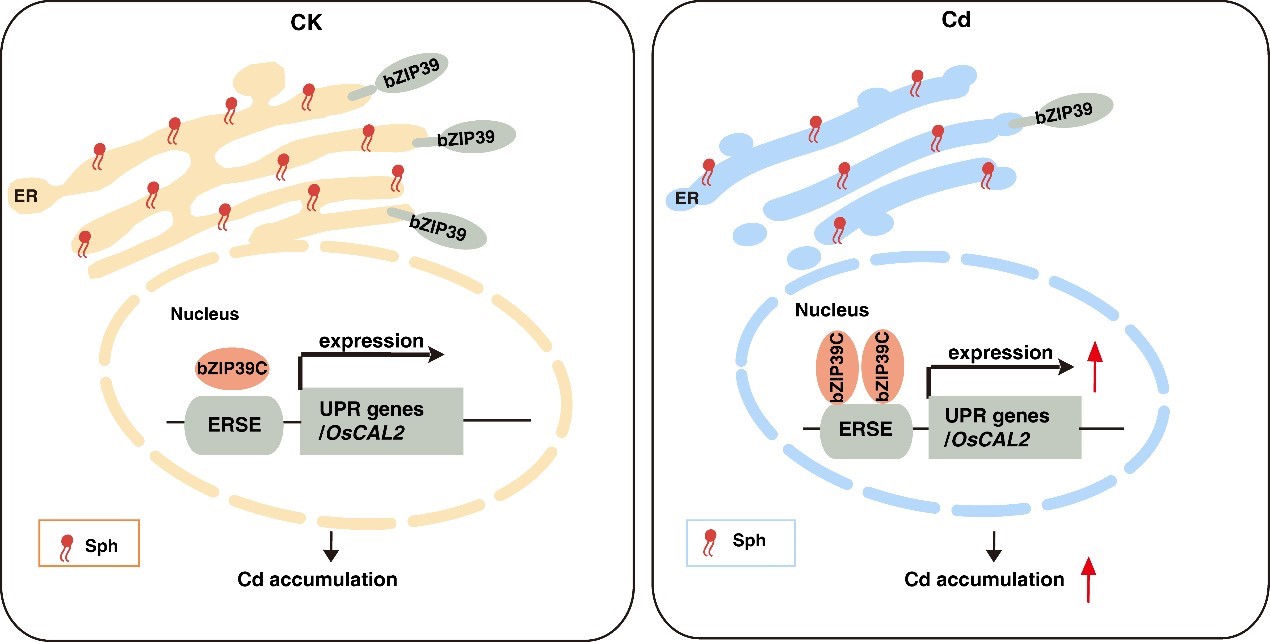Progress in molecular regulation of cadmium accumulation in rice
Recently, a team led by Professor Mingyong Zhang from the South China Botanical Garden of the Chinese Academy of Sciences, in collaboration with Professor Nan Yao from the School of Life Sciences at Sun Yat-sen University, has recently achieved significant advancements in understanding the molecular regulation of cadmium accumulation in rice. Their research findings have been published in the Journal of Hazardous Materials.
Rice, as a crucial food crop globally, is particularly vulnerable to soil heavy metal contamination, impacting both its overall quality and productivity. In China, cadmium stands out as a significant pollutant, posing a grave risk to agricultural land safety and food supply. This toxic element, known for its carcinogenic properties, can build up in the human system via consumption of contaminated rice, potentially resulting in health issues like weakened bones and kidney damage, posing a serious threat to human well-being.
According to Dr. Jian Li, the primary author of the study, developing rice varieties with low cadmium accumulation is deemed the most cost-effective and practical approach to combat cadmium pollution in rice. This strategy is also essential in meeting the critical national objective of 'ensuring basic self-sufficiency in grains and absolute security in staple food.' The identification of novel cadmium-resistant gene loci and the elucidation of molecular mechanisms underlying cadmium accumulation traits in rice are fundamental prerequisites for the breeding of low-cadmium rice varieties.
The study revealed that OsbZIP39, a key regulatory factor of the endoplasmic reticulum stress response, plays a role in regulating cadmium accumulation in rice. When exposed to cadmium, the sphingolipid content on the cell membrane decreases significantly, causing increased disorder in the membrane. This results in OsbZIP39 dissociating from the endoplasmic reticulum and moving into the nucleus. Nuclear-localized OsbZIP39 targets the promoter of the defensin-like protein gene OsCAL2, leading to upregulation of its expression and subsequent cadmium accumulation.
Analysis of single nucleotide polymorphisms (SNPs) in the coding region of OsbZIP39 and their correlation with cadmium concentration in grains of 235 re-sequenced rice germplasms revealed that two SNPs in OsbZIP39 significantly influence grain cadmium levels. These SNPs exhibit distinct patterns between indica and japonica rice, with OsbZIP39Pro149 and OsbZIP39Glu173 predominantly found in japonica rice, resulting in lower cadmium accumulation compared to indica rice, where the genotypes are OsbZIP39Ser149 and OsbZIP39Lys173. This suggests that genetic variations in OsbZIP39 SNPs may contribute to the differences in cadmium accumulation observed between indica and japonica rice.
This study offers novel genetic resources and a theoretical foundation for the molecular breeding of low-cadmium rice. The article link is: DOI: 10.1016/j.jhazmat.2024.135007
First author information: Jian Li: Associate Professor, Agriculture and Biotechnology Research Center, South China Botanical Garden, Chinese Academy of Science, Research field: Sphingolipid and Plant Resistance, E-mail: lijian76@scbg.ac.cn; Tel :13560410991.

OsbZIP39 served as a core regulator of Cd uptake in rice. Under normal conditions, OsbZIP39 was predominantly anchored in the ER, resulting in low expression of OsCAL2 and inhibition of Cd accumulation. Under Cd treatment, the levels of Cers and hCers decrease, altering membrane order and potentially causing the re-localization and activation of OsbZIP39. The activated OsbZIP39 translocated to the nucleus where it binds to the promoter of OsCAL2, subsequently enhancing its expression and facilitating Cd accumulation.